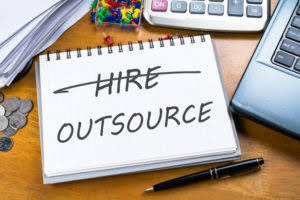Process Costing In Management Accounting
Content

For instance, square footage of floor space might be used to allocate heating and air conditioning costs. Costs usually go through a series of steps in the allocation process. Costs per unit we can reduce waste, increase productivity, and manager resources more carefully.

If there is scarp value of the units lost, such value is credited to an abnormal loss account, and the balance remaining after that in that account is written off to costing profit and loss account. The cost of the process is to be apportioned between the units lost abnormally and good units in the ratio of such units. The cost of units representing abnormal loss is debited to abnormal loss account and credited to process account. For example, for the company that bottles cola, it would not be feasible or worthwhile to separate and record the cost of each bottle of cola in the bottling process. Therefore, the company would assign costs to the bottling process as a whole for a period of time. Then they would divide that overall process cost by the number of bottles produced during that period of time to assign production costs to each bottle of cola.
Retail Vs Cost Inventory Accounting
This results in the costing system selected being the one that best matches the manufacturing process. This cost accounting method is very suitable for companies where products are manufactures in large quantities and sold in small quantities, even one by one. It’s ideal for businesses that keep finished goods and transfer them to Cost of Goods Sold when they sell the products. This requires an accurate cost per unit to match COGS to the related revenue.

Process costing does not use direct allocation to apply business costs to individual goods. Direct allocation costing applies a specific amount of raw materials, production labor and manufacturing overhead to goods or services. At many companies, a different department handles each stage in the production process. Each department prepares a report that details its direct materials, direct labor and manufacturing overhead costs.
Cost Flow In Process Costing
Your actual cost may be different than what you budget. From there, you budget your cost for both direct and overhead. This is crucial to generate job estimates that are as close to your actual cost as possible. The last process also transfers the finished goods to finished stock account at a price higher than cost. Some process industries transfer the finished goods from one process to the next process at a price above cost. The excess of the transfer price over cost represents inter-process profit.
When a product is manufactured through various processes, the output of each process is transferred to the subsequent process and that of the last process is transferred to the finished stock. Introduced into the production process and on an average 95 kgs. Comes out after the process, we can say that the normal process loss is 5%. The normal losses are absorbed by the completed production. Management usually able to identify an average percentage of normal losses expected to arise from the production process. Process Costing, also called job-order costing, assigns total manufacturing costs to the units being produced.
Job Costing Vs Process Costing: The Key Differences
In an Oil refinery, petrol is the main product, while sulphur, chemical fertilisers, bitumen are the by-products. https://www.bookstime.com/ Completing opening work-in-process, i.e., opening W.I.P. which was completed during process.
- Unless you offer a variety of both customised and standardized products, you are unlikely to need to use both types of costing processes.
- Determine the number of completed items plus unfinished items produced during each period.
- As mentioned earlier, this amount could differ from the total cost, by item, entered in the Data Input worksheet.
- Main product may not require any further processing.
- This is why many large corporations use process costing methods to help them track total costs and total inventory being produced.
- Monthly Expenses also pulls directly from each department’s worksheet.
Conversion costs are $100,000, or $.67 per package, comprising $70,000 in direct labor and $30,000 for overhead, including maintenance expenses, insurance costs and electricity. The total cost is $150,000, and with 150,000 units produced, its cost-per-unit is $1. With process costing, companies determine item cost by tracking the cost of each stage in the production process, instead of tracking costs for each individual item. After adding up the cost of all the steps in the process, they divide the total cost by the number of items. For example, a paper company might track the cost of each stage in the process of turning wood pulp into reams of paper, then divide the total cost by the number of reams to get the cost per ream. In the process costing system, costs are accumulated, period by period not per job or batch by batch.
Product
This is the sum of the Beginning WIP unitsand the number of Units Started In Production. For Depts B and C, the quantities will be transferred from Depts A and B, respectively.
- This difficulty will always be experienced, when work done is represented both by finished and unfinished units.
- Imagine, if you will, that you are a skilled artist, taking commission for various requests for custom pieces.
- Job-order costing focuses on a specific product or service produced for a given customer.
- It is assumed that the incomplete units are finished before the new units added to the process.
Or in the case of Dept C, the items were completely finished and transferred into finished goods inventory. A product may be manufactured through one process or more than one processes. In case two or more processes are involved in manufacturing one finished product, the question arises is “which process has consumed the expense? It helps identify the specific cost assigned to each process. It enables the management for further decision making.
Process Costing Method is applicable where the output results from a sequence of continuous or repetitive operations or processes and products are identical and cannot be segregated. Cost of materials, wages and overhead expenses are collected for each process or operation in a period. There is a wide scope of errors while calculating average costs. An error in one average cost will be carried through all processes to the valuation of work in process and finished goods. A company may manufacture thousands or millions of units of product in a given period of time. This process makes use of the concept of Equivalent units. Equivalent units are nothing but the proportionate number of finished units considering the amount of labor and overheads already absorbed by the finished units.
Characteristics Of Process Costing
Production of a variety of products using the same production facilities. Standardised Products – Products and processes are completely standardised. Product and processes are completely standardised .
- We focus on the weighted average approach here and leave the discussion of the FIFO method to more advanced cost accounting textbooks.
- This is because, everything else being equal, more units were transferred to the next department.
- Keep in mind when filling out these fields, that the sum of the Direct Labor Cost Per Unit across all three departments should equal the same amount for the entire unit, from your operating budget.
- It is difficult to tell the first drumstick made on Monday from the 32,000th one made on Thursday, so a computer matches the sticks in pairs based on the tone produced.
- To calculate the cost of production of each process and each unit in the different processes.
Consider the importance of process costing alongside its advantages and limitations. Calculate the costs assigned to ending WIP inventory for the Painting department for direct materials, direct labor, overhead, and in total. Work in process begins with the first stage of production , continues with the second stage , and ends with the third stage . When products have gone through all three stages of production, they are shipped to a warehouse, and the costs are entered into finished goods inventory. Once products are delivered to retail stores, product costs are transferred from finished goods inventory to cost of goods sold. Again, keep in mind that this is the cost for your direct materials that would be added within each department.
The raw materials are assigned based on material requisition forms, the labor based on time tickets, and the overhead based on predetermined overhead rates based on direct labor dollars. The letters of the journal entries used to illustrate the accounting for process cost systems correspond to the letters in Figure . However, factors like the number of products completed and the number left in-process at the end of an accounting period can affect the total costs a company is responsible for during production. This is why many large corporations use process costing methods to help them track total costs and total inventory being produced.
Overheads can be factory overheads, office overheads and selling and distribution overheads. All these overheads expenses are distributed or apportioned among all the processes on a reasonable and relevant base. It is usual that a certain amount of material introduced into Process Costing the processes are lost, scrapped or wasted. There are many ways in which losses may arise e.g., evaporation, shrinkage, breakages, spoilage for various reasons. The output from the process may be a single product, but there may also be by-products and/or joint products.
Each time, Sandy would repeat the scheme, pairing his fraudulent check with one that appeared legitimate. To apply the Process Costing method in our company’s cost accounting, we follow five steps. These can differ depending on the business structure and the industry, but in general, we can describe them as follows. Process Costing works best in companies where production is a continuous cycle of repetitive processes and tasks. The technique’s essence is to accumulate all related costs for the total output volume and then split them over the whole volume proportionally. The management has clearly defined process cost centers and the accumulation of costs such as cost of material, cost of labour and overheads by the cost centre. Production Order – In process costing work is performed for stock purpose on the continuous basis.
Examples Of Operations To Use Process Costing
However, this is the equivalent of 15 full-time students, or 15 FTES. The Coca-Cola Company is one of the world’s largest producers of nonalcoholic beverages.
